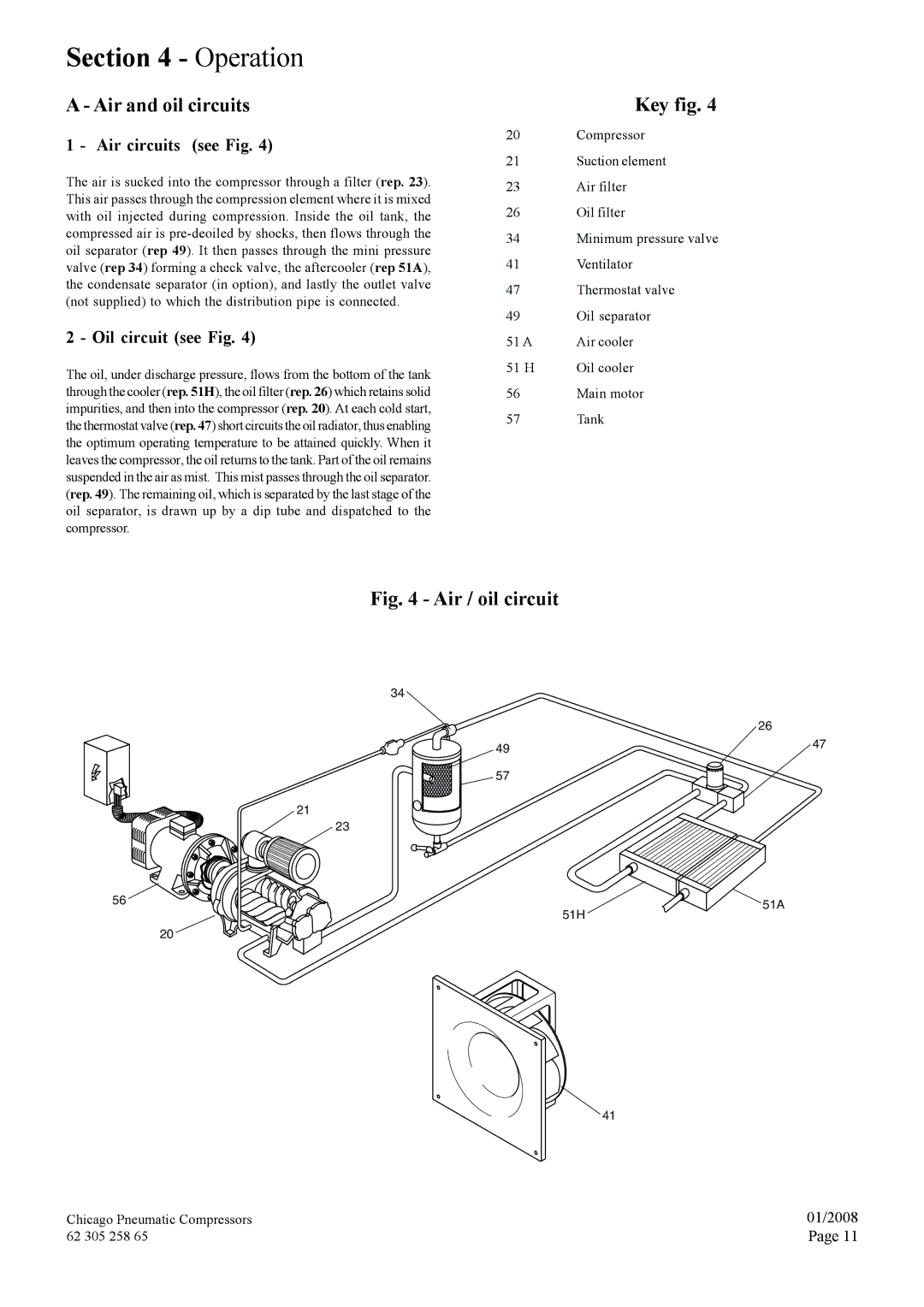
Section 4 - Operation
A - Air and oil circuits
1 - Air circuits (see Fig. 4)
The air is sucked into the compressor through a filter (rep. 23). This air passes through the compression element where it is mixed with oil injected during compression. Inside the oil tank, the compressed air is
2 - Oil circuit (see Fig. 4)
The oil, under discharge pressure, flows from the bottom of the tank through the cooler (rep. 51H), the oil filter (rep. 26) which retains solid impurities, and then into the compressor (rep. 20). At each cold start, the thermostat valve (rep. 47) short circuits the oil radiator, thus enabling the optimum operating temperature to be attained quickly. When it leaves the compressor, the oil returns to the tank. Part of the oil remains suspended in the air as mist. This mist passes through the oil separator. (rep. 49). The remaining oil, which is separated by the last stage of the oil separator, is drawn up by a dip tube and dispatched to the compressor.
Key fig. 4
20Compressor
21Suction element
23 | Air filter |
26 | Oil filter |
34 | Minimum pressure valve |
41 | Ventilator |
47 | Thermostat valve |
49 | Oil separator |
51 A | Air cooler |
51 H | Oil cooler |
56Main motor
57Tank
Fig. 4 - Air / oil circuit
34
| 26 |
49 | 47 |
| |
57 |
|
21
23
56 | 51A |
| 51H |
| 20 |
41
Chicago Pneumatic Compressors | 01/2008 |
62 305 258 65 | Page 11 |
